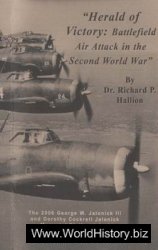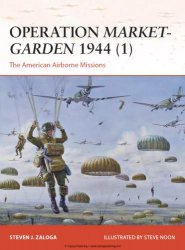Contrarily to wie es eigentlich gewesen, the aphoristic statement by Leopold von Ranke, often considered the father of scientific history, intending to present history the way it actually happened, this work takes up a rather limited and unambitious task of presenting Russo-Ottoman confrontations prior to and during the First World War the way it had been represented by the contemporaries, making wie es eigentlich geschrieben wurde, if ever possible, the basic motto and guideline. Therefore, the main objective of this work would be the presentation and comparison of a great variety of controversial information that would reveal, among other things, personal prejudice, ethnic, religious and political affiliation of the author, as well as deliberate attempts of misinformation and propaganda, rather than the examination of the actual historical sources and events from the standpoint of their veracity.
Thematically, the main focus of this work is the examination of the Russian Empire prior to and during the First World War in the light of current political, strategic, economic, social and ethno-religious developments. However, despite having Russia at the focal point of this research, all of the above mentioned aspects of Russian life are scrutinized and presented from the Ottoman point of view, that is, primarily taking into consideration the current political, strategic, economic, social and ethnoreligious developments in the Ottoman Empire. Therefore, the analysis of the Russo-Ottoman relations prior to and during the First World War is preceded by the historical and traditional trends and inclinations that profoundly influenced the classical patterns of their relations, which, in their turn, shaped the current perceptions, fears and beliefs.
Having the imperial policies and confrontations as its main point, the chronological limits of this work are confined within the period of Imperial Russia and, therefore, the Russo-Ottoman relations after the February Revolution, including the periods of the Provisional Government and Bolshevik regime are beyond the scope of the research. In this respect, although being the main focus, the whole duration of the First World War is not the exact chronological sketch. As was mentioned above, the analysis of the Russo-Ottoman relations of the period around the First World War would also take into consideration the historical background of the topic, so that the analysis of the theme would be thoroughly based on the historical developments that gradually led to the Great War.
The four main chapters of this work, which represent the principal focus of this research, scrutinize the nature of the Russo-Ottoman confrontations at certain different and distinct levels, all of which in complementary and comparative analysis make up a comprehensive and integrated picture. The Ottoman perception of the Russian state and society as represented primarily in the periodical press is scrutinized in this work at three distinct levels, which represent different thematic and chronologic limits of the question, as well as the nature of the reflections itself. The first level presented in Chapter II of this work, which could be defined as the ‘traditional’ set of representations, reveals certain perceptions of the Russians and the Russian State by the Ottomans, which refer to the general image of the Russians in the eyes of the Ottomans. Revealing the traditional Russian aspirations directly or indirectly concerning vital Ottoman territories and interests, these perceptions tend not to change in the course of time and represent a persistent and particularly negative image of Russians generated in the minds of common Ottomans that could easily survive the changes in daily politics or conjuncture.
The second level of representations presented in Chapter III scrutinizes the Russian Empire in connection with its Muslim and Turkic population, where the Ottomans are represented not only as a mere victim of the Russian imperial ambitions, but play an active role as the domain of the Caliph, as well as the only independent Muslim and Turkish state. Thus, the Russian territories with predominant or sizeable Muslim
And Turkic population became in a sense the playground for the Ottoman imperialistic policy that duly employed Pan-Islamic and Pan-Turkist propaganda. Taking into consideration that many Ottoman publications had an impressive distribution in those areas, as well as the prominent role played by certain emigre publicists in the Ottoman press, the Russian Muslims and Turks also derived benefit from the Ottoman periodicals using them as a herald for their own ambitions, often bringing their local clashes with fellow Muslims to the Ottoman proscenium.
The third level of analysis presented in Chapter IV and Chapter V examines the reflections of the First World War events and policies in the Ottoman periodical press directly related to the war and warfare that duly employ all the techniques and strategies of the wartime propaganda. In addition to the Islamic or Pan-Islamic appeals for the Holy War, along with all other means of religious encouragement and instigation, the Ottoman wartime propaganda targeting the Russian Empire as reflected in periodical press resorts not only to traditional Ottoman sentiments revealed in Chapter II, but also reflects the current balance of powers and alliances. Therefore, the classical notion of jihad as a Holy War against the infidels as well as the Pan-Islamic appeal are considerably modified because of the alliance with Germany, while the collaboration with Austria-Hungary and Bulgaria, the countries until recently considered responsible for the loss of the European provinces of the Ottoman Empire, often made Russia and only Russia guilty even for the policies it never pursued.
The descriptions of the Russian Empire, Russians and the Muslims of the Russian Empire in this work are mainly to reflect their representation in the Ottoman periodical press of the period prior to and during the First World War or, more specifically, the national newspapers and magazines published in Ottoman Turkish language. Therefore, the non-Ottoman Turkish language periodicals, whether the minority journals, foreign journals or Ottoman journals in European or Middle Eastern languages other than Ottoman, as well as local publications in any language would be beyond the primary scope. Taking into consideration that numerous publications in French, German, Arabic, Persian, Armenian, Urdu and even Russian14 were published in the Ottoman Empire, the primary source of reference for this work is confined within chronologic, linguistic and geographic limits. However, the comprehensive analysis of the period and events would certainly require comparative study of numerous current and contemporary sources in many other languages, above all in Russian.
However, since the thorough and comprehensive analysis of the Ottoman representation of the Russian state and society during such a complicated and internationalized conflict like the First World War, with cross-border and crossethnic politics and aspirations involved, could not be carried out only through
Periodical press, a great variety of contemporary Russian sources, both in Russian and Turkic languages, as well as Ottoman and European sources of that period are scrutinized to complete the comprehensive picture. The supplementary sources in Ottoman, Russian, English, German, French, Belarusian, Kazan Tatar, Uzbek, Uighur, Kazakh and Crimean Tatar include official documents and correspondence, memoirs, travelogues, campaign notes, political and strategic essays, and, naturally, the periodical press.




 World History
World History









